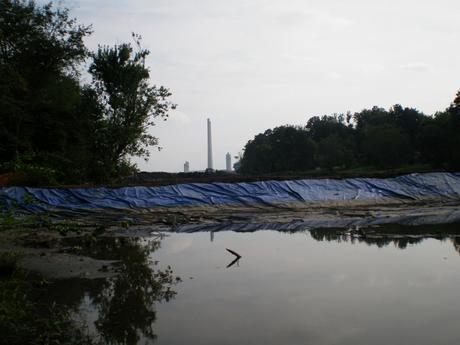Oxygen level can affect coal ash contamination

Duke University researchers have led a study demonstrating that the level of oxygen in a coal ash disposal site can greatly affect how much toxic selenium and arsenic can be leached from the system.
Their study, published in the journal Applied Geochemistry, follows the 2014 coal ash spill into North Carolina’s Dan River from a ruptured Duke Energy drainage pipe, which saw the question of what to do with other ageing coal ash retention ponds become a hotly debated topic. Duke Energy currently plans to dig up 24 of its 36 ponds in the Carolinas — but the 12 remaining ponds without a clean-up plan hold more than 70% of the 108 million tons of ash held in North Carolina ponds.
Current risk assessments of coal ash disposal focus on pH as the primary driver of leaching from coal ash. But according to Heileen Hsu-Kim, the corresponding author of the study, energy companies should be looking at whether their oxygenation systems are aerobic or anaerobic.
“We wanted to demonstrate that oxygenation actually matters a lot, especially for arsenic and selenium,” she said. Both contaminants are potential problems for aquatic wildlife, and arsenic can be cancerous to humans.
One clean-up option is to essentially turn the ponds into a landfill by removing the water, capping the remaining waste with a top liner and covering it all with soil. “[But] some of these ponds did not have bottom liners when they were originally constructed, so they’ll be susceptible to leaking to groundwater even if they are covered on top,” said Hsu-Kim.
“When you cap a site, you’re separating it from air. And if the buried waste goes anaerobic, it could enhance the leaching of some elements, leading to more contamination than expected.”
The study saw Hsu-Kim and graduate student Grace Schwartz set up a series of microcosms — small-scale laboratory replicas of environments. They then looked at how much arsenic and selenium leached out of the system both with and without oxygen.
The tests showed that with oxygen, the levels of selenium leaching are much higher than that of arsenic. But that trend flips when the system becomes anaerobic — there is an increase in the leaching of arsenic and a decrease for selenium. This is not surprising, said Hsu-Kim, given the chemistry of the two elements.
“I’m trying to figure out if anyone is thinking about the fact that they’re changing the oxygen conditions within the ash site by covering it,” said Hsu-Kim. “This research suggests that some of the proposed methods for ash ponds closure in North Carolina may not be a slam-dunk solution to the problem.”
Vodafone and MobileMuster team up to tackle e-waste
New figures reveal that there are more than 23 million mobile phones estimated to be sitting idle...
APCO releases plan to strengthen packaging system
The Australian Packaging Covenant Organisation has released its FY26–27 Business Plan,...
Specsavers partnership tackles optical waste
A nationwide recycling program is addressing the growing number of old prescription glasses and...










